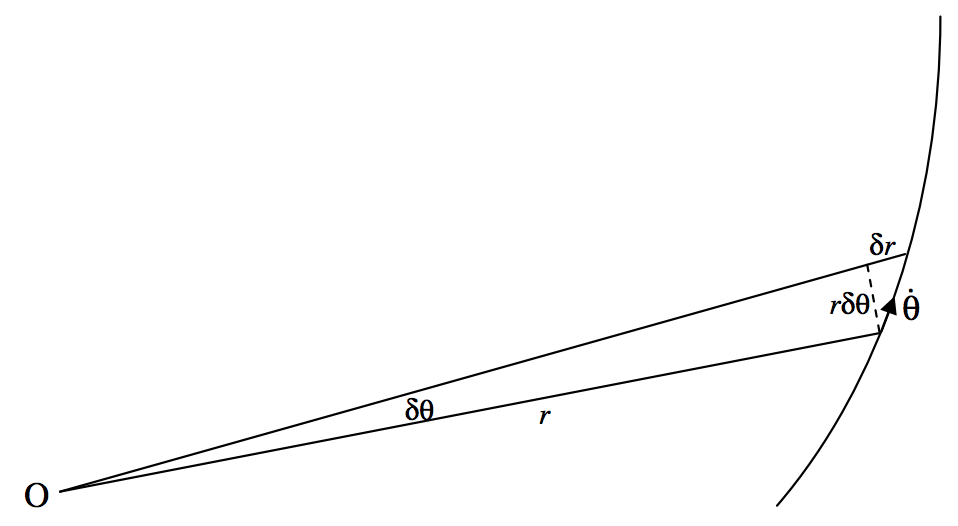9.2: La segunda ley de Kepler a partir de la conservación del momento angular
- Page ID
- 131080

\(\text{FIGURE IX.1}\)
En la figura\(\text{IX.1}\), una partícula de masa\(m\) se mueve en algún tipo de trayectoria en la que la única fuerza sobre ella se dirige hacia o lejos del punto\(\text{O}\). En algún momento, sus coordenadas polares lo son\((r, θ)\). En un momento\(δt\) posterior estas coordenadas han aumentado en\(δr\) y\(δθ\).
Usando la fórmula media base por altura para el área de un triángulo, vemos que el área barrida por el vector de radio es aproximadamente
\[δA = \frac{1}{2} r^2 δ θ+ \frac{1}{2} r δ θδ r. \label{9.3.1} \tag{9.3.1}\]
Al dividir ambos lados por\(δt\) y tomar el límite como\(δt → 0\), vemos que la velocidad a la que el vector de radio barre el área es
\[\dot{A} = \frac{1}{2} r^2 \dot{θ}. \label{9.3.2} \tag{9.3.2}\]
Pero el momento angular es,\(mr^2\dot{θ}\) y como esto es constante, la velocidad de área también es constante. La velocidad superficial, de hecho, es la mitad del momento angular por unidad de masa.


